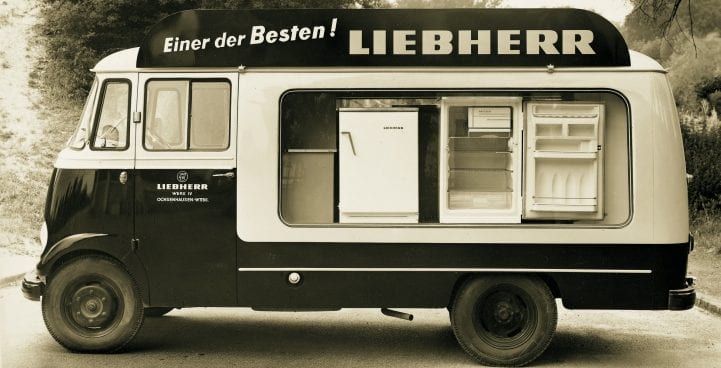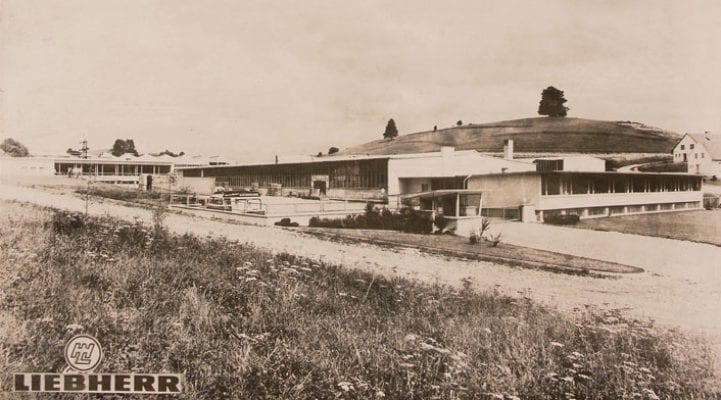What was once considered a luxury is now an indispensable standard: The ability to store food in a refrigerator or freezer, keeping it fresh for an extended period of time.
‘Once upon a time…’ is a well-known fairy tale opening that could easily be used to start the story of the refrigerator. Do you know how people stopped food from perishing 100 years ago? Or even before that, when refrigerators and freezers as we know them today didn’t exist?

Going back a long way to the days any food that was hunted or gathered was eaten straight away. The idea of cooling food was a long way off. Our ancestors gradually gave up their nomadic lifestyle and stopped being on the hunt for food, so things started to change. As people settled, they had to find ways of keeping food fresh. They developed a range of solutions including smoking, curing and pickling foods. In the Middle Ages, niches in wooden walls provided a certain degree of cooling for food storage, as did streams, ponds, and holes dug in the ground. A cool cellar was an ideal place to keep perishable food fresh for longer. Foods were stored in wooden or clay containers.
Development of the Refrigerator
In 1748, William Cullen changed the course of food preservation history by demonstrating artificial cooling at the University of Glasgow. Chemical refrigerators were developed and brought to the commercial market in 1834. Ferdinand Carré made further refinements in 1859. However, refrigerators were far away from being a standard feature in private homes. People stored food in a simple wooden crate containing blocks of ice and insulation materials. This explains the origin of the term ‘ice box’, which we still use today to refer to refrigerators. In the 1870s, Carl von Linde with his Gesellschaft für Lindes Eismaschinen AG (Linde’s Ice Machine Company) played a key role in the development of refrigerators. Later technical and chemical advances saw refrigerators become a standard feature in American households by the 1930s.
Refrigerators Save People Time
In Germany, refrigerators remained a genuine luxury item for years to come. They were too expensive and bulky for the average household. Many households didn’t even have electricity at that time. Villages and communities relied on communal cooling houses where fruit, vegetables, meat and other types of food could be stored. This was quite simply much cheaper. It wasn’t until the 1950s that refrigerators really took off in Germany. They eliminated the need for hours of pre-cooking and daily trips to the shops. Soon, refrigerators were being referred to as ‘every woman’s best friend’. There’s no doubt these ‘new friends’ offered a few advantages to men as well…
Meals instantly became far more varied. Cream cakes, cold cuts, fruit and other tasty delights were now all being enjoyed in the days of post-war ‘Wirtschaftswunder’ Germany.
Liebherr Starts Making Refrigerators

The early days of refrigerator production at Liebherr. The Ochsenhausen plant in 1959.
The first Liebherr refrigerator was produced in 1954. At this time, despite the economic miracle, 90% of German households didn’t own an electric refrigerator. Company founder Hans Liebherr saw an opportunity to enter the sector by developing, manufacturing, and continually improving, quality appliances. The rest is, as they say, history. Refrigerators become a standard and integral part of the home by the early 1970s. First came freestanding, individual appliances. Then built-in models were gradually introduced to the market, and combination fridge-freezers became available. As the years went by, Liebherr became a well-known refrigeration specialist, continually developing new technology and innovations in the refrigeration and freezing sector. NoFrost technology, launched in 1987, is a prime example. NoFrost prevents the inside of the freezer compartment from frosting over. With its introduction, arduous and time-consuming defrosting became a thing of the past.
Added Convenience Thanks to NoFrost and BioFresh
After NoFrost came BioFresh. Patented by Liebherr in 1996, a near 32°F zone incorporated in the refrigerator guarantees even greater freshness and convenience. Appliances with BioFresh keep fruit, vegetables, fish, meat and dairy products fresher for much longer than had previously been possible. Different types of food have different temperature and humidity requirements. These need to be met if the food’s flavor, vitamin content, texture and appearance are to be retained. BioFresh provides just the right conditions to prolong optimum storage. As an example, lettuce will stay fresh for 5 days in a normal refrigerator compartment, but up to 12 days in a BioFresh compartment.
Over the years, Liebherr also developed into an industry-leader in the fields of design and energy efficiency. By employing environmentally friendly refrigerants, highly efficient compressors and new insulation materials, Liebherr earned the coveted ENERGY STAR “Most Efficient” designation for 2017. It’s the seventh year in a row that various Liebherr models have received this honorable distinction.
Smart Homes: The Next Evolution
The SmartDeviceBox makes it possible to connect Liebherr MONOLITH refrigerators and freezers to your WiFi network. With the SmartDevice app, for example, customers can obtain an immediate overview of all the important functions and control the appliance from anywhere. SmartDeviceBox also works with Amazon’s Alexa, letting you control certain refrigerator functions from any Alexa enabled device and with PHILIPS Hue hubs and IFTTT (If This, Then That). The Liebherr SmartDevice app will be available for iOS and Android. Activate SuperCool and SuperFrost for rapid cooldown while you’re still out shopping for groceries. Receive alerts if the door is left open or if the power goes out. SmartDevice will even help you become a better chef! The app will let you access hundreds of recipes and help you organize your shopping list!
The modular FridgeCam™ makes the products stocked in the refrigerator visible at any time. This provides customers with many advantages. They can easily maintain an overview of the groceries in stock, create shopping lists and avoid buying the same item twice due to being unaware of fridge contents.
